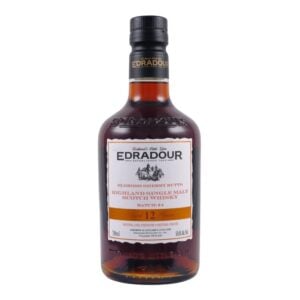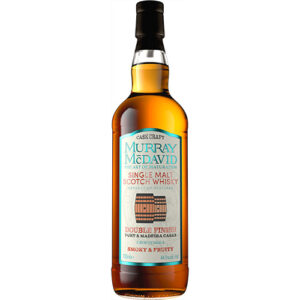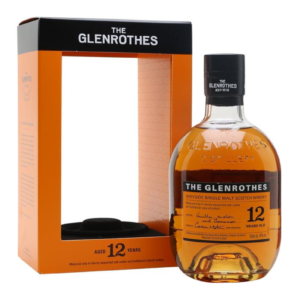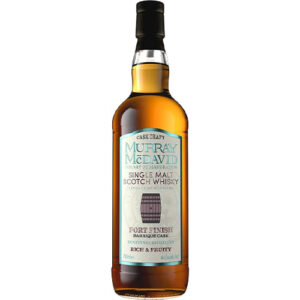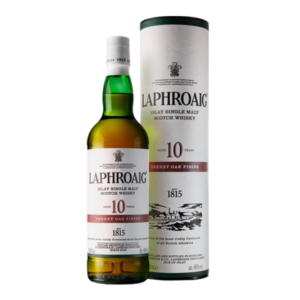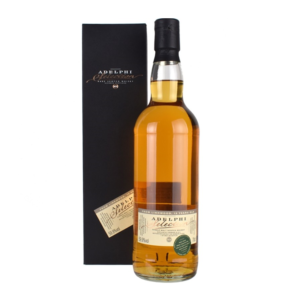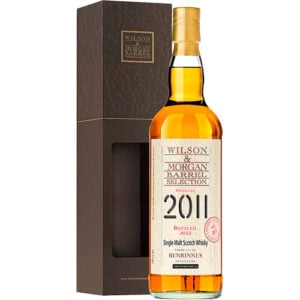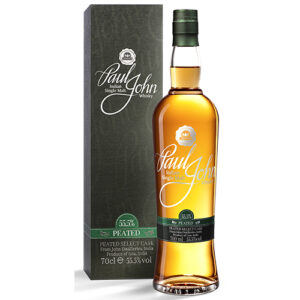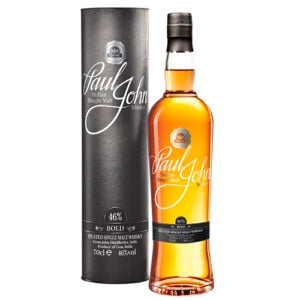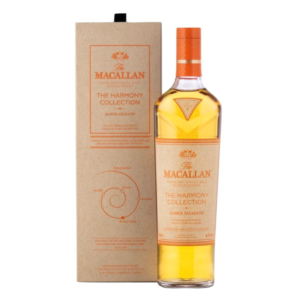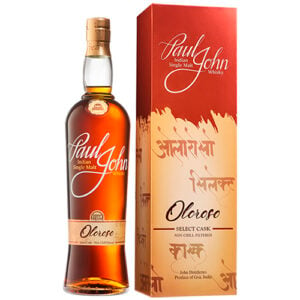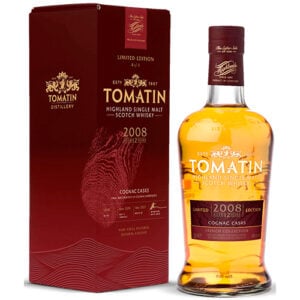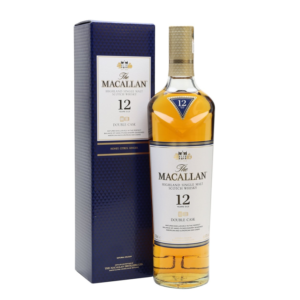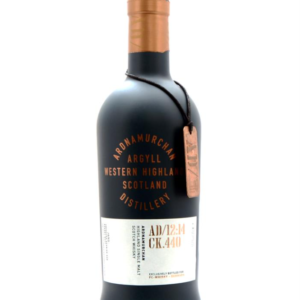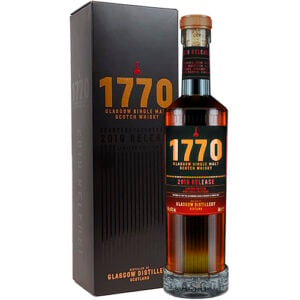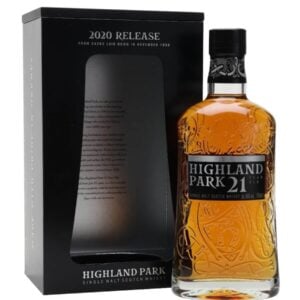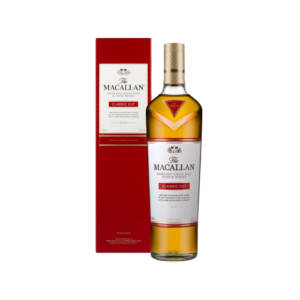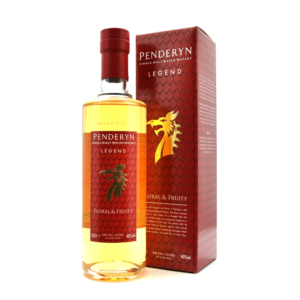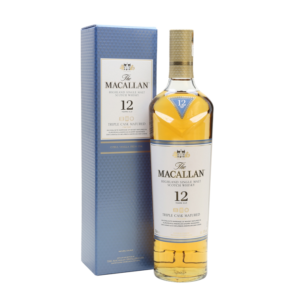Showing 1–24 of 389 resultsSorted by popularity
Single Malt Whisky – The Complete Guide
TL;DR: Short Version
- Single Malt whisky is characterized by being made at a single distillery from 100% malted barley
- Produced primarily from malted barley, water, and yeast, and defined by batch distillation in copper pot stills
- Found in several styles, including Speyside, Islay, Highland, Lowland, and Campbeltown expressions
- Best enjoyed in a tulip-shaped glass at room temperature and can be experienced in classics like the Penicillin or Rusty Nail
Disclaimer: This guide is intended for informational purposes for adults over 18 years of age. Vault of Spirits encourages responsible alcohol consumption.
Introduction to Single Malt Whisky
Single Malt whisky has a rich history and fascinating craftsmanship behind it. From its origins in Scotland to its global popularity today, this spirit has evolved to become one of the world’s most revered alcoholic beverages.
This guide provides insight into the production, flavor notes, and enjoyment of Single Malt whisky, whether you’re a beginner or an experienced enthusiast.
How Did Single Malt Whisky Originate?
From Past to Present
Single Malt whisky’s story begins in Scotland, where monastic production dates back to at least the 15th century.
The earliest documented evidence of whisky distillation in Scotland comes from the Exchequer Rolls of 1494, recording “eight bolls of malt to Friar John Cor wherewith to make aqua vitae.”
Initially produced as a medicinal tonic, whisky evolved over centuries from rough, unaged spirit to the sophisticated, carefully matured product we know today.
Which Historical Milestones Have Shaped Single Malt Whisky?
The Excise Act of 1823 was pivotal, legalizing whisky production in Scotland for a license fee and set tax.
This legislation transformed illicit distillation into a legitimate industry and laid the groundwork for modern Single Malt production.
The invention of the continuous still in 1826 created a division between malt whisky (pot still) and grain whisky (continuous still) production.
The phylloxera epidemic of the 1880s devastated French vineyards, causing brandy shortages and creating an opportunity for Scotch whisky to gain international recognition.
How Has Single Malt Whisky Influenced Cultural Traditions?
In Scotland, whisky has been integral to cultural celebrations for centuries, from weddings to funerals and everything in between.
The traditional Scottish toast “Slàinte Mhath” (pronounced “slanj-a-va”), meaning “good health,” is deeply connected with whisky consumption.
Whisky plays a central role in Burns Night celebrations each January 25th, honoring poet Robert Burns with ceremonial toasts and readings.
The tradition of “The Quaich” – a two-handled drinking vessel – represents friendship and hospitality, often used in whisky-sharing ceremonies.
Why Is Single Malt Whisky Popular Today?
Single Malt whisky has experienced a renaissance in recent decades, driven by connoisseur culture and appreciation for craft spirits.
The category’s emphasis on provenance, tradition, and terroir resonates with modern consumers seeking authenticity and story.
Japanese, Taiwanese, Australian, and American distilleries have emerged as respected producers, expanding Single Malt beyond its Scottish roots.
Premium Single Malts have become prestigious collectibles, with rare bottlings achieving record-breaking auction prices and attracting both enthusiasts and investors.
How Is Single Malt Whisky Produced?
Which Raw Materials Are Used in Production?
Single Malt whisky relies on a remarkably simple set of ingredients transformed through time and technique.
Primary ingredients:
- Malted Barley – The exclusive grain used in Single Malt, providing sugars for fermentation and distinctive flavor compounds
- Water – Often sourced from local springs or rivers, contributing regional character and mineral content
- Yeast – Converts sugars to alcohol while producing flavor compounds during fermentation
How Does the Fermentation Process Work?
Fermentation begins after the milled malted barley (grist) is mixed with hot water in a mash tun, creating a sugar-rich liquid called wort.
The wort is cooled and transferred to fermentation vessels (washbacks) where yeast is added to convert sugars into alcohol.
Fermentation typically lasts 48-72 hours, producing a beer-like liquid called “wash” with 7-10% ABV.
Beyond alcohol production, fermentation creates esters, aldehydes, and other compounds crucial for the whisky’s final flavor profile.
Which Distillation Techniques Are Used?
Single Malt whisky is exclusively distilled in copper pot stills, typically undergoing double distillation (though some distilleries use triple distillation).
Common distillation methods:
- First Distillation (Low Wines) – Concentrates the alcohol from around 8% to approximately 20-25% ABV
- Second Distillation (Spirit Run) – Further concentrates to 60-75% ABV, with careful “cuts” separating desirable middle portion
- Triple Distillation – Used by some distilleries (particularly in Ireland and Lowland Scotland) for a lighter, more refined spirit
What Is the Significance of Maturation?
Maturation is arguably the most transformative stage in Single Malt production, legally requiring a minimum of three years in wooden casks in Scotland.
Oak casks, particularly those previously used for bourbon or sherry, contribute up to 70% of the whisky’s final flavor through extraction of wood compounds.
During maturation, the “angel’s share” (evaporation) claims 1-2% of volume annually, concentrating flavors while slowly reducing alcohol content.
Chemical reactions during maturation transform harsh congeners into pleasant flavors, while oxidation and extraction develop complexity, color, and character.
Which Regions Are Known for Single Malt Whisky?
Where Are the Best Variants Produced?
Scotland remains the spiritual home of Single Malt, divided into distinct whisky-producing regions.
Speyside hosts the highest concentration of distilleries, producing generally fruity, elegant, and accessible malts like Glenfiddich, The Macallan, and Glenlivet.
Islay is famous for intensely peated, maritime-influenced whiskies like Laphroaig, Ardbeg, and Lagavulin.
Other notable Scottish regions include the Highlands (diverse styles), Lowlands (typically lighter, grassier), and Campbeltown (once whisky capital of the world).
Beyond Scotland, Japan has emerged as a premier Single Malt producer with distilleries like Yamazaki and Hakushu, while Taiwan’s Kavalan, India’s Amrut, and various American craft distilleries gain recognition.
How Do Geography and Climate Affect the Flavor?
Coastal distilleries often exhibit maritime influences with briny, sometimes iodine-like characteristics from sea air permeating aging warehouses.
Scotland’s cool, humid climate is ideal for slow, gentle maturation, with less extreme temperature fluctuations than warmer regions.
Local water sources, influenced by surrounding geology, contribute distinct mineral profiles that affect fermentation and ultimately flavor.
Contrasting climates in emerging whisky nations create different maturation environments – Taiwan’s tropical climate accelerates aging and extraction, while Japan’s varied microclimates allow for diverse maturation conditions.
What New Trends Are Seen in the Production of Single Malt Whisky?
Cask finishing has become increasingly popular, with whiskies completed in wine, rum, or exotic wood casks to impart additional flavor dimensions.
Terroir-focused production emphasizes local ingredients and environmental factors, with some distilleries growing their own barley and using local water sources.
Non-traditional aging techniques include sound-aging, pressure-aging, and micro-oxygenation to accelerate or modify maturation processes.
Transparency trends see producers sharing more information about age, cask types, barley varieties, and production methods to appeal to educated consumers.
What Do the Different Quality Designations Mean?
By definition, Single Malt whisky must be produced from 100% malted barley at a single distillery and aged in oak casks for at least three years (in Scotland).
Age statements (like “12 years old”) indicate the youngest whisky in the bottle, while “vintage” designations specify the distillation year.
Terms like “cask strength” mean the whisky hasn’t been diluted after maturation, typically resulting in higher ABV percentages.
Designations like “non-chill filtered” indicate the whisky retains natural fatty acids and esters that contribute to texture and flavor but might cause cloudiness when chilled.
How Does Single Malt Whisky Taste?
What Characterizes the Typical Flavor Profile?
Single Malt whisky presents an extraordinarily diverse range of flavors, but typically features malty sweetness as its foundation.
Typical aromas:
- Fruit Notes – Apple, pear, citrus, dried fruits (raisins, figs), tropical fruits (in some expressions)
- Wood Influence – Vanilla, caramel, toffee, spice (cinnamon, nutmeg), oak
- Complex Notes – Honey, heather, nuts, chocolate, coffee, leather, tobacco, smoke, peat (earthy, medicinal, or maritime)
How Does the Flavor Vary Between Different Styles?
Speyside malts typically offer honeyed sweetness, orchard fruits, and delicate spice notes, often with minimal peat influence.
Islay whiskies are renowned for powerful peat smoke, iodine, seaweed, and medicinal qualities balanced with underlying sweetness.
Highland malts span a broad spectrum from lighter, heathery expressions to richer, more robust profiles with hints of smoke.
Lowland whiskies tend toward lighter, grassy, citrusy profiles with elegant, delicate characteristics and minimal peat.
Campbeltown malts often combine slight salinity with light peaty qualities and a distinctive oily character.
How Does the Flavor Develop with Age?
Younger whiskies (3-8 years) typically display more raw spirit character, pronounced malt notes, and direct oak influence.
Middle-aged expressions (10-18 years) develop balance and integration, with fruit notes mellowing and complexity increasing.
Older whiskies (20+ years) can develop remarkable depth, dried fruit characters, antique oak notes, and sometimes increased tropical fruit elements.
Extended aging also brings concentration through evaporation, with some ultra-aged expressions developing prized “rancio” qualities reminiscent of fine old cognacs.
What Signs Reveal High Quality?
Balance is paramount – high-quality malts harmoniously integrate all flavor elements without any single aspect dominating.
Complexity and depth reveal themselves through evolving flavors that change from nose to palate to finish.
Length of finish indicates quality, with superior malts lingering pleasantly long after swallowing.
Texture and mouthfeel contribute significantly, with quality expressions offering silky, sometimes oily textures regardless of alcohol strength.
How Is Single Malt Whisky Best Enjoyed?
What Is the Optimal Serving Method?
For appreciation, try Single Malt neat first to experience its intended character, particularly with premium expressions.
A few drops of room temperature spring water can open up aromas and flavors by breaking surface tension and diluting alcohol burn.
Ice dulls aromas but can make higher-proof expressions more approachable; consider large, slow-melting ice if preferred.
Allow the whisky time to breathe after pouring – 5-15 minutes can significantly enhance the experience, especially with older expressions.
Which Glass and Temperature Are Ideal?
Tulip-shaped glasses like the Glencairn concentrate aromas toward the nose while providing enough space for swirling.
Copita or snifter glasses also work well, with their narrowed rims focusing aromatic compounds.
Room temperature (60-65°F/15-18°C) is generally ideal for appreciating all flavor components.
Avoid chilling the glass as cold temperatures suppress aromatics and flavor complexity.
How Do You Taste Like an Expert?
Begin with appearance, noting color (indicating cask influence) and viscosity (visible as “legs” on the glass).
Nose first without swirling, then after gentle agitation, holding the glass at chest level before bringing closer.
Taste with a small sip, allowing it to coat your palate completely before swallowing.
Consider structure and progression: the initial impression, mid-palate development, and finish length and character.
Between tastings, cleanse your palate with room temperature water and allow time for your palate to reset.
Which Dishes Complement Single Malt Whisky?
Lighter, unpeated malts pair beautifully with seafood, particularly smoked salmon, scallops, or oysters.
Sherried, rich expressions complement dark chocolate, dried fruits, and aged cheeses like Comté or Gouda.
Peated, smoky malts work wonderfully with smoked meats, game, blue cheese, and surprisingly, dark chocolate.
Classic Scottish pairings include haggis, smoked salmon, game dishes, and shortbread (particularly with sweeter expressions).
Which Cocktails Can Be Made with Single Malt Whisky?
Which Classic Cocktails Should You Know?
While purists may balk at mixing fine Single Malts, certain cocktails showcase their complexity beautifully.
Penicillin
- Ingredients: 2 oz blended Scotch, ½ oz lemon juice, ¾ oz honey-ginger syrup, ¼ oz peated Single Malt float
- Preparation: Shake first three ingredients with ice, strain into rocks glass over ice, float Single Malt on top
- History: Created by Sam Ross in New York in the early 2000s, named for its “medicinal” qualities
Rusty Nail
- Ingredients: 2 oz Scotch whisky (Single Malt works beautifully), ½ oz Drambuie
- Preparation: Stir with ice and strain into rocks glass with fresh ice
- History: Popularized in the 1950s, its name possibly refers to the rusty nails used to stir the drink in its early days
Which Modern Cocktails Are Worth Trying?
Blood and Sand – A balanced mix of Single Malt, cherry liqueur, sweet vermouth, and orange juice, shaken and served straight up.
Scotch Sour – Single Malt, lemon juice, simple syrup, and optional egg white create a silky, balanced cocktail that showcases the whisky’s character.
Bobby Burns – Equal parts Single Malt and sweet vermouth with a touch of Bénédictine, stirred and served straight up with a lemon twist.
Godfather – The simple combination of Single Malt and amaretto over ice creates a surprisingly complex, almond-accented sipper.
How Is Single Malt Whisky Enjoyed Neat?
Neat in a proper whisky glass is the traditional and preferred method for appreciating fine Single Malts.
With a few drops of spring water (never tap water) to open up aromatics and reduce alcohol prickle.
“On the rocks” if preferred, ideally with a single large ice cube that melts slowly to minimize dilution.
In a whisky flight of different expressions from the same distillery or region for comparative tasting.
Which Homemade Variants Can You Experiment With?
Infuse Single Malt with complementary ingredients like vanilla beans, dried fruits, or cinnamon sticks for personalized expressions.
Create custom blends by combining different Single Malts in various proportions to achieve desired flavor profiles.
Make whisky-infused honey or syrup for cocktails by combining Single Malt with honey and complementary spices.
Try “finishing” experiments by transferring small amounts of whisky to jars with wood chips soaked in sherry, port, or other finishing agents.
What Should You Know Before Buying Single Malt Whisky?
Which Details Should You Pay Attention To When Buying?
Distillery name indicates the source and often suggests regional style characteristics.
Age statement guarantees minimum maturation time, though no age statement (NAS) doesn’t necessarily indicate inferior quality.
Cask information describes maturation influences – ex-bourbon, sherry, wine casks, etc.
Bottling strength affects intensity and value – cask strength offerings provide more whisky by volume since you can dilute to taste.
Natural color versus added caramel coloring (E150a) – the latter is common and legal, but some purists prefer naturally colored expressions.
What Do You Get for Your Money in Different Price Ranges?
Entry-level ($30-50): Typically younger expressions (often NAS or 10-12 years), offering solid introduction to distillery character.
Mid-range ($60-120): Core range expressions with age statements (12-18 years) or special finishes, showing more complexity.
Premium ($120-300): Older expressions (18-25 years), limited editions, or special cask selections with significant depth and complexity.
Ultra-premium ($300+): Rare releases, very old expressions (25+ years), collector items, and special editions with exceptional character and often presentation.
How Is Single Malt Whisky Stored Correctly?
Store bottles upright to prevent high-ABV spirit from deteriorating the cork.
Keep away from direct sunlight, which can degrade both whisky and packaging.
Maintain constant, cool temperature – significant temperature fluctuations can accelerate chemical changes.
Once opened, consume within 1-2 years for optimal flavor, as oxidation gradually affects the spirit, especially when bottles are less than half full.
Is Single Malt Whisky a Good Investment?
Limited releases from prestigious distilleries like Macallan, Dalmore, and closed distilleries like Port Ellen have shown substantial appreciation.
Japanese whiskies with age statements have seen remarkable value increases due to supply shortages.
The market has grown significantly, with specialized whisky auction houses and investment funds emerging.
Careful research is essential – focus on rarity, distillery reputation, and authenticated provenance rather than simply age or price point.
Which Brands Do We Recommend?
What’s Best for Beginners?
Glenfiddich 12 Year – Approachable, fruity Speyside that introduces classic Single Malt character without overwhelming complexity.
Glenmorangie Original 10 Year – Elegant Highland malt with honey and citrus notes, perfect for those new to the category.
Highland Park 12 Year – Gentle introduction to peated whisky, with balanced honey sweetness and mild smoke.
The Balvenie DoubleWood 12 Year – Shows the influence of cask finishing with accessible honey, vanilla, and dried fruit notes.
What Will Impress Enthusiasts?
Springbank 15 Year – Campbeltown classic with complex oil, fruit, and gentle smoke character from traditional production methods.
Glendronach 18 Parliament – Sherry cask matured expression with rich dried fruits, chocolate, and spice notes.
Talisker 18 Year – Perfectly balanced Isle of Skye malt combining maritime character with elegant fruit and moderate peat.
Lagavulin 16 Year – Benchmark Islay malt with deep, complex smoke complemented by sweet undertones and remarkable balance.
Which Bottles Are Most Sought After?
Macallan rare aged expressions, particularly those from the 1960s-1980s, are among the most collected and valuable.
Whiskies from “silent” (closed) distilleries like Port Ellen, Brora, and Rosebank command extraordinary prices.
Limited edition Japanese expressions from Yamazaki, Hakushu, and Karuizawa have seen meteoric price increases.
Special releases from distilleries with passionate followings, like Ardbeg Committee Releases or Springbank Local Barley editions.
Where Do You Get the Most for Your Money?
Ardbeg 10 Year offers tremendous quality-to-price ratio for peated whisky enthusiasts.
Bunnahabhain 12 Year delivers rich, unpeated Islay character with exceptional complexity for its price point.
Aberlour A’bunadh provides cask-strength, sherry-matured excellence at a reasonable price compared to competitors.
Kilkerran and Glenfarclas expressions generally offer excellent value compared to more marketing-driven brands.
Frequently Asked Questions
What Is Single Malt Whisky?
Single Malt whisky is a distilled alcoholic beverage made from 100% malted barley at a single distillery.
The “single” refers to one distillery, not a single batch or cask.
It must be aged in oak casks (minimum three years in Scotland) and bottled at a minimum of 40% ABV.
Unlike blended whisky, it contains no grain whisky and represents the pure expression of a distillery’s character.
How Is Single Malt Whisky Produced?
Malted barley is milled and mixed with hot water to extract sugars, creating “wort.”
This liquid is fermented with yeast, producing a beer-like “wash” of about 8-9% ABV.
The wash undergoes double (sometimes triple) distillation in copper pot stills, increasing alcohol content to 60-75% ABV.
The new spirit matures in oak casks for a minimum of three years, developing color and complexity before bottling.
What Characterizes Single Malt Whisky?
Distinctive malty sweetness derived from its 100% malted barley composition.
Complex flavor development through pot still distillation, which retains more congeners than column stills.
Regional variation reflecting traditional production methods, local water, and climate influences.
Incredible diversity of flavor profiles, from light and floral to rich and fruity to intensely smoky and peaty.
Where Can You Buy Single Malt Whisky?
Specialist whisky retailers offer the broadest selection and often provide expert guidance.
Well-stocked liquor stores typically carry popular expressions from major distilleries.
Online retailers provide access to rare bottles and independent bottlings not available locally.
Distillery visitor centers often sell exclusive expressions unavailable elsewhere.
Auction sites like Whisky Auctioneer and Scotch Whisky Auctions offer access to discontinued and rare bottles.
